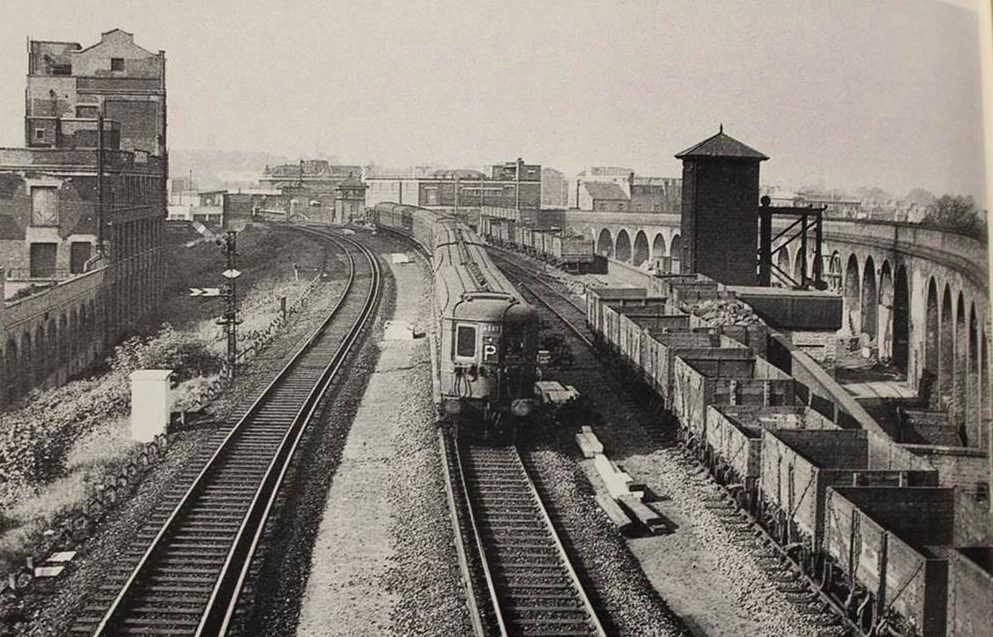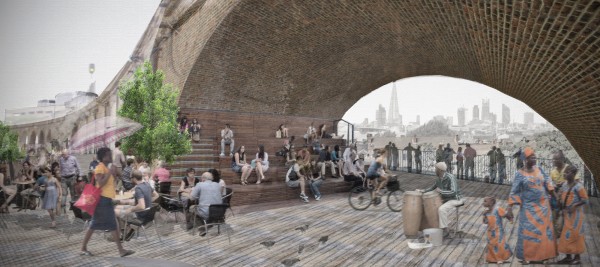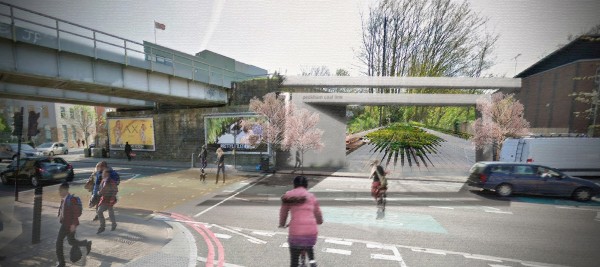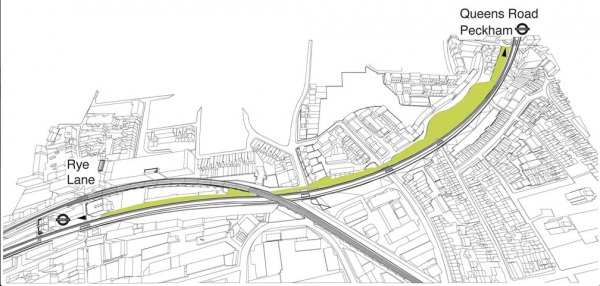THERE’S a small, little-known nature reserve in the heart of Peckham but hidden from view. It’s far longer than it is wide, around a hundred metres or so, with a pond at one end and two paths snaking through it.
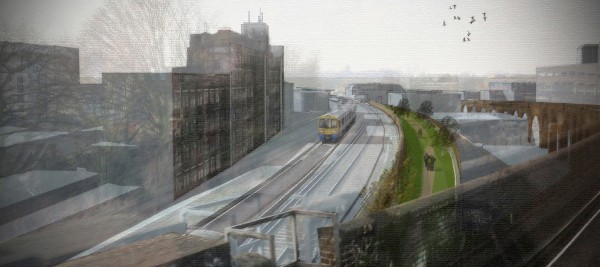 There are apple trees here, as well as many bushes bearing berries and hips of one sort or another. It’s called the Kirkwood Nature Reserve and on the last Saturday of August it played host to a tea and cake party to help promote the Peckham Coal Line. The Coal Line is an ambitious grassroots project run by local volunteers for an elevated park, path and cycleway around one kilometre long, running from Rye Lane to Queen’s Road. I’m part of the group trying to make it happen.
There are apple trees here, as well as many bushes bearing berries and hips of one sort or another. It’s called the Kirkwood Nature Reserve and on the last Saturday of August it played host to a tea and cake party to help promote the Peckham Coal Line. The Coal Line is an ambitious grassroots project run by local volunteers for an elevated park, path and cycleway around one kilometre long, running from Rye Lane to Queen’s Road. I’m part of the group trying to make it happen.
It takes its name from railway coal sidings next to the Bussey Building in Rye Lane that were decommissioned in the 1950s. The coal would have come in on the main railway line, then unloaded on to smaller-gauge carriages that ran down into what is now a scaffolding yard. From there, it was hauled into horse-drawn carts to be distributed among the homes and businesses of Peckham.
The Coal Line would be built on these disused sidings. Anyone familiar with the New York High Line will know the idea: to turn disused industrial space into something pleasant and functional that’s fit for today and the future. But as much as creating a physical link between two sides of Peckham and plugging a missing link in a cycle route from Brixton to the river at Rotherhithe, the project is about creating community links. The idea is that by coming together around the planning of the Coal Line, people will form new relationships that can respond to other, unrelated, matters — whether in the realm of civic planning, cultural development or local commerce.
We’re trying to build a park but we’re also trying to build a stronger community. But back to Kirkwood Nature Reserve and the tea and the cakes. Towards its northern end, the Line will run through the reserve, which is bordered by the Cossall Park Estate. How the reserve came into being shares similarities with the Coal Line, both being examples of local people seeing an opportunity to turn disused land/space into something beautiful and useful.
Back in the 1960s, there were plans to build London Ringways – dual carriageways around the inner capital. The southern section would have run through Peckham on land now home to the Kirkwood Nature Reserve. The Cossall Park Estate was built as a ‘buffer’ against the traffic noise. The so-called Barrier Block in Brixton was built for the same reason. When the plans were ditched, the Kirkwood land became dormant until people on the Cossall grouped together and formed a Friends group and lobbied for public money to turn the wasteland into the reserve it is today.
In order to see whether there was local support for the Coal Line, we got in touch with the Kirkwood Friends group and through them, the Cossall Park Residents and Tenants Association. Both were supportive and through them the tea and cake party was organised to invite local people to share their thoughts on the Coal Line. It rained all afternoon but there was still a good turnout.
This was to become just one of a series of events we have undertaken. We’ve held guided walks to show the proposed route as part of the Chelsea Fringe Festival and Open House weekend. Hundreds of people have come and expressed their support. We presented the idea to Southwark council, local MP Harriet Harman, and Network Rail — the primary landowner. Again, all were supportive.
Community group Peckham Vision, which has a strong track record in ensuring local people’s views are incorporated into local developments, has also been invaluable. The network has grown: Sustrans, Trees For Cities, London National Park City and Southwark Living Streets soon joined Peckham Vision as supporting partners. Local, regional and national press coverage followed.
And now we are trying to raise £66,000 to fund a feasibility study that will tell us exactly how the Line can be built and to pay for further community engagement. The Mayor of London has donated £10,000 but we have some way to go. As I write, more than 350 people have pledged hard-earned cash. But this isn’t just about Peckham. As much as building the Line, we’re trying to create a model for community-building – a means by which people can come together around an idea who, when together, can present themselves as a powerful voice that cannot be ignored when authorities announce plans for an area, whether in south London, the capital or the country beyond.
Sometimes it seems an impossible task, to raise so much money. But with every new connection we make, with every donation made, every positive piece of feedback received, we are further inspired. If you share these ideas and want to donate please visit our crowdfunding site to find out more.
www.spacehive.com/peckhamcoalline
